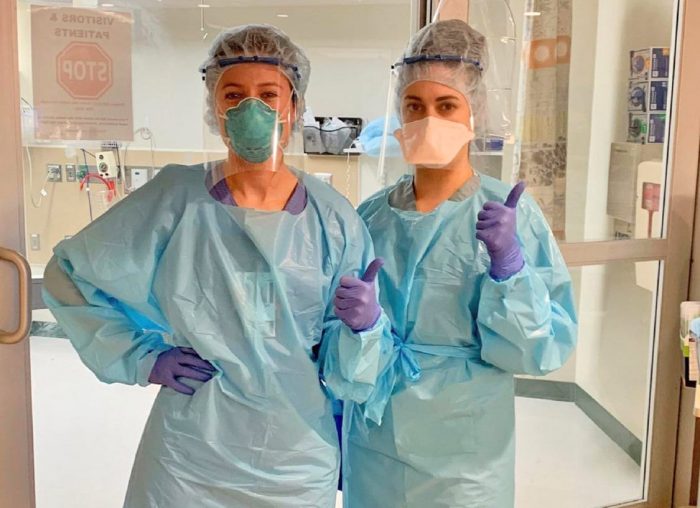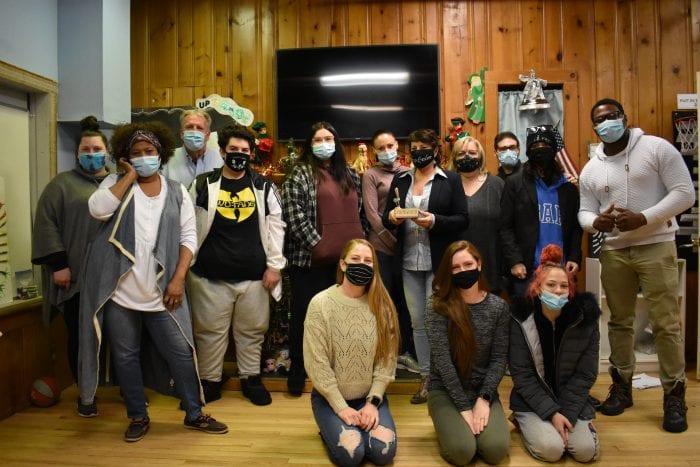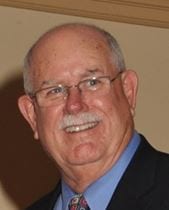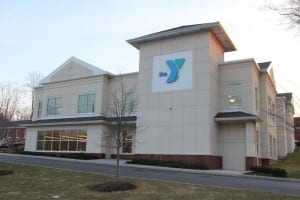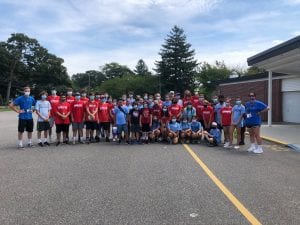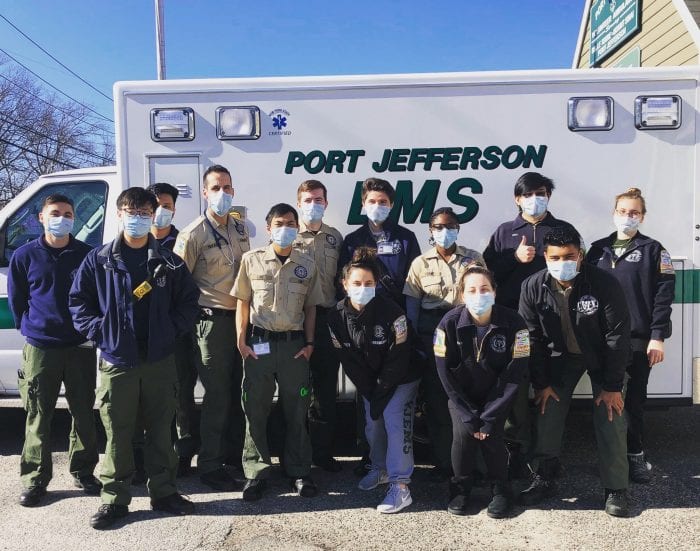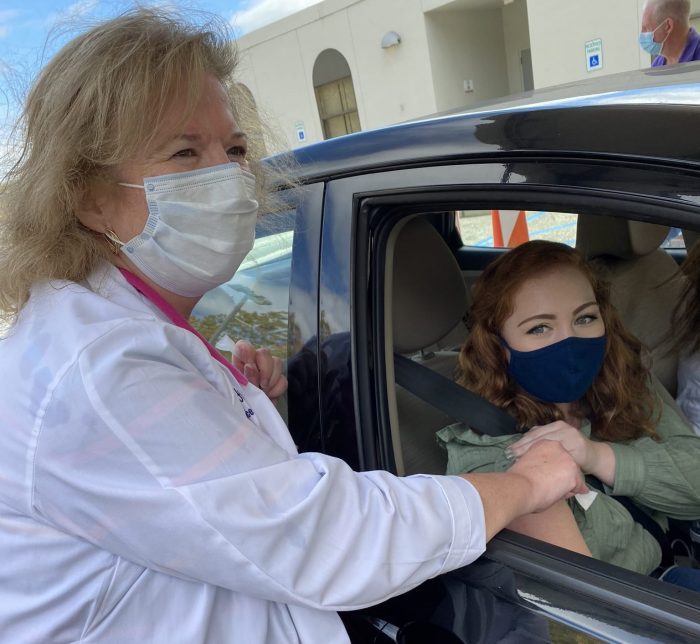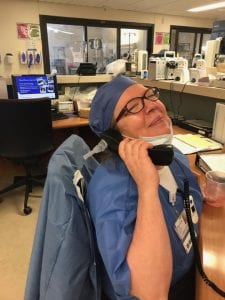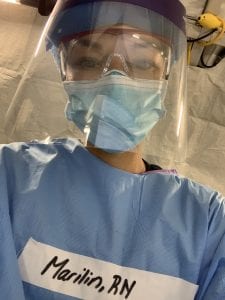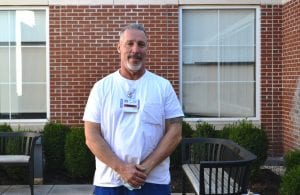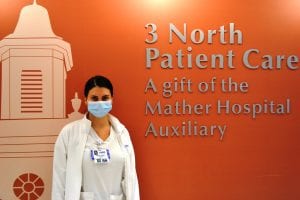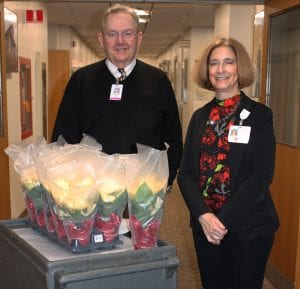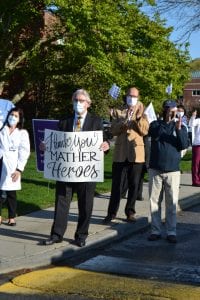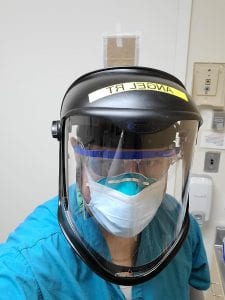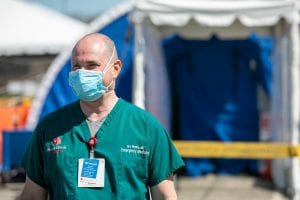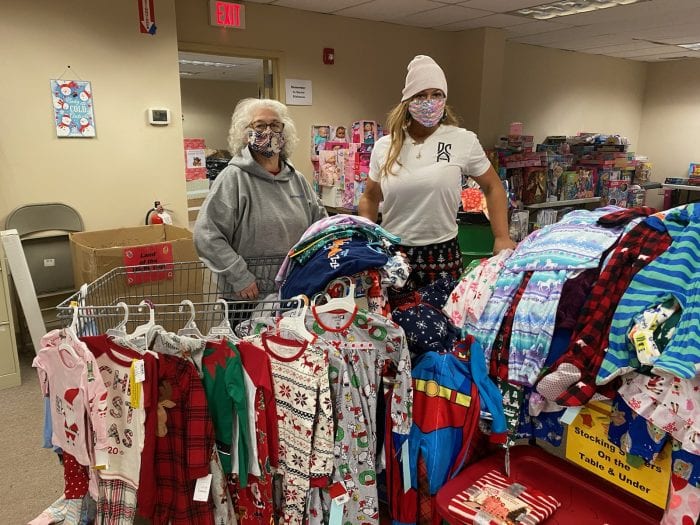During the pandemic, helping to feed those with food insecurities came not only from expected organizations such as food banks and church pantries but also restaurants across the North Shore. Several stepped up to the plate to help out as their dining rooms remained empty due to mandatory state shutdowns.
Whether it was the Greater Port Jefferson Chamber of Commerce working with small businesses to donate food to local hospitals or nonprofits like Island Harvest facilitating meals for those who needed it, here are just a few examples of those who went above and beyond.
Long Island Cares
“We are seeing a lot of people for the first time, and I think that a lot of it’s due to unemployment, job loss, furloughs.” — Claire Fratello
Long Island Cares, the Hauppauge-based food bank, is in the business of making sure residents in Suffolk and Nassau counties don’t go hungry. According to Claire Fratello, LIC’s assistant to the CEO for administration and media relations, the nonprofit, which regularly has 374 member pantries and six satellite locations, established during the pandemic 18 emergency pop-up food distribution sites, a food-box packing center in Hauppauge to make up emergency food boxes, and a consumer-choice pantry in Bethpage, modeled after a supermarket..
From March to November, LI Cares has assisted more than 220,000 people all across Long Island, and the number of new people receiving emergency food assistance due to COVID-19 has increased to 146,919. Food insecurity is up 58% compared to 2019.
LI Cares collected enough food items to give out nearly 12 million meals throughout the pandemic.
“We are seeing a lot of people for the first time, and I think that a lot of it’s due to unemployment, job loss, furloughs,” she said.
Fratello added that LI Cares has tried something new with virtual food drives, and they have seen an approximate 33% increase in donations compared to last year.
“I think the generosity has been kind of fueled by the fact that there are people out there who know that others are struggling,” she said.
In September, LI Cares started creating food boxes for workers of a few Long Island restaurants. The owner of the restaurants expressed concern for his employees who were working less than usual and receiving fewer tips. Each week the workers have been able to pick up food boxes at LI Cares’ Huntington and Hauppauge locations.
Axis Food Pantry
Among the food pantries providing help to local residents is a new one established by Axis Church. Pastor Kara Bocchino said the church has members from all over and three locations, Port Jefferson, Medford and Patchogue, and the new food pantry operates out of the main building in Medford.
“We were sitting home thinking how we can’t just sit home when we’re an outreach-focused church,” she said.
Committed to doing something, the church members called the Patchogue-Medford school district in April, and discovered there were several families in need. Congregants donated a large amount of food and would drop off donations on Sundays. The collected food was delivered to 60 families a week and about another 60 families would pick food up at the church every Saturday.
After the school year ended, church members continued to deliver to the families. However, when the need died down, it inspired the church to start a food pantry. Bocchino said she began receiving calls from the New York State Department of Health asking if they could help deliver food to nearby residents who were quarantined. While they mostly bring food to those who live up and down the Route 112 corridor, they have also helped out those in areas surrounding Port Jefferson.
Bocchino said when she can’t deliver to a person due to distance, she connects the DOH with a church that can.
One family she delivered to was in Rocky Point. She said the drive was worth it when she learned the woman in the household was a foster mom to five children. Bocchino added that the chain Chick-fil-A donated a tray of food to the family.
After food was dropped off for a family in Selden, Bocchino found out the parents needed help buying their children Christmas presents and purchasing oil to heat their house. She said church members quickly stepped up to the plate to help them.
The pastor hasn’t been surprised by the generosity she’s witnessed from congregants and businesses.
“What happens is when people hear of a need, they’re willing to fill it,” she said. “When they don’t hear of the need, they can’t do it.”
La Famiglia, Smithtown
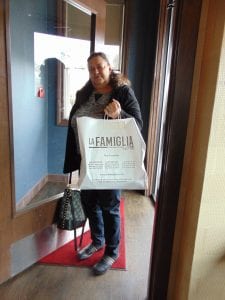
During the pandemic, many restaurants took the lead in offering free food to seniors in their communities and delivering meals to health care workers at local hospitals.
As soon as restaurants were prohibited to provide indoor dining, La Famiglia in Smithtown posted on its Facebook page that the restaurant would donate 50 meals a day to any senior who wanted them over two days. The word spread fast, and soon regulars were stopping by to donate money, which allowed co-owner John Cracchiolo and manager Giovanni Divella to donate 150 meals that weekend.
But the donations didn’t stop there, Divella said, and the restaurant has continued giving away free meals throughout the pandemic, delivering them to St. Catherine of Siena Medical Center and Suffolk County Police Department’s 4th Precinct among other locations to say “thank you” to health care workers and law enforcement.
Divella said there was no question about helping out in the community during difficult times. The restaurant has stood on the corner of Jericho Turnpike and Brooksite Drive in Smithtown for 20 years.
“This community is by far the most tight-knit community I’ve ever met,” he said. “And not just Smithtown, but all the surrounding areas: St. James, Kings Park, Commack and Hauppauge.”
Divella said he and Cracchiolo didn’t think the pandemic would last this long but feel fortunate to have been able to stay open during the pandemic, even with the changes in capacity, increased cleaning and mask mandates.
“We’re learning every day to reinvent ourselves,” Divella said. “We’re learning every day to kind of go with the curve.”
Stony Brook Village Center
Thanking the health care workers at Stony Brook University Hospital took a village, as restaurants in Stony Brook Village Center banded together to put together meals for health care workers during the pandemic.
Gloria Rocchio, president of The Ward Melville Heritage Organization which manages the village center, said the Three Village Inn, Fratelli’s, Crazy Beans and Sweet Mama’s all took part in delivering meals to the medical professionals at Stony Brook University Hospital. In addition, The Crushed Olive, Village Coffee Market, Chocolate Works, Premiere Pastry, Brew Cheese and Penney’s Car Care delivered a variety of snacks, cheeses, pastries, cookies, drinks and much more. More than 11,000 meals and breakroom foods were distributed to SBUH from the beginning of April toward the end of June.
Rocchio said the initiative was called Stony Brook Village/Stony Brook University Hospital Healthcare Meal Program, and it began after it was discovered that a few of the restaurants in the village center were already delivering food to the hospital after receiving donations from customers. Claude Cardin, owner of Fratelli’s, spent $15,000 of his own money to deliver food to the workers.
She credited the work of the restaurants being made a little easier with generous donations to WMHO totaling $25,000 from local residents and businesses as well as people from Nassau County and out of the state.
“It was all of the community coming together as one, to take care of one cause — to care for essential workers,” Rocchio said. “It was so heartwarming.”

